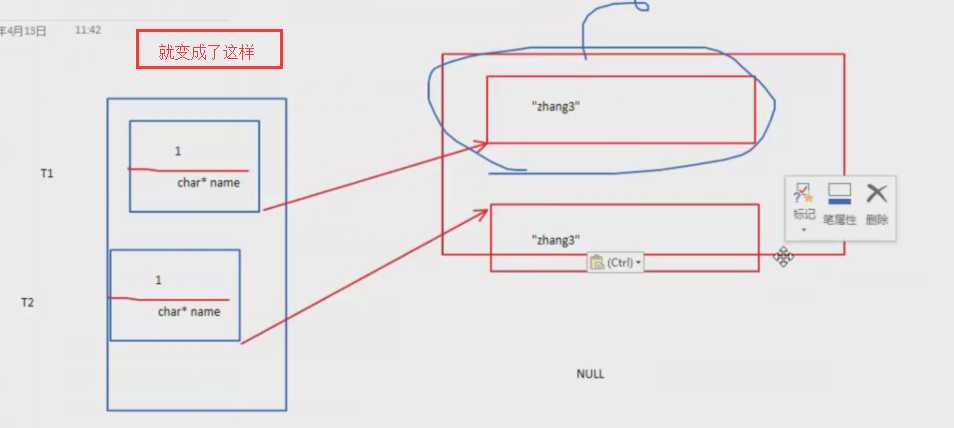1)浅拷贝,就是单单的将数值拷过去,包括你的指针指向
2)那么就有一个问题了(浅拷贝)
1 #include<iostream> 2 #include<string> 3 using namespace std; 4 5 6 class Teacher{ 7 public: 8 Teacher(int id,char *name) 9 { 10 this->id=id; 11 int len=strlen(name); 12 13 this->name=(char*)malloc(len+1); 14 strcpy(this->name,name); 15 } 16 Teacher(const Teacher &another) 17 { 18 this->name=another.name; 19 this->id=another.id; 20 } 21 ~Teacher() 22 { 23 cout<<"Teacher的析构函数"<<endl; 24 if(this->name!=NULL) 25 { 26 free(this->name); 27 this->name=NULL; 28 } 29 30 } 31 private: 32 char *name; 33 int id; 34 35 }; 36 //为啥有这个函数,因为想要我实例化的对象好 析构掉,只要我调用了这个函数,之后就会把这个函数里的对象给析构掉 37 void hanshu() 38 { 39 Teacher t1(1,"王超"); 40 Teacher t2=t1; 41 } 42 int main() 43 { 44 hanshu(); 45 46 //后面,那个hanshu()里的对象就被袭析构掉了 47 return 0; 48 }
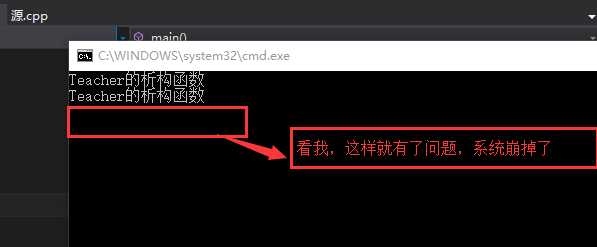
这个的关系类图是:
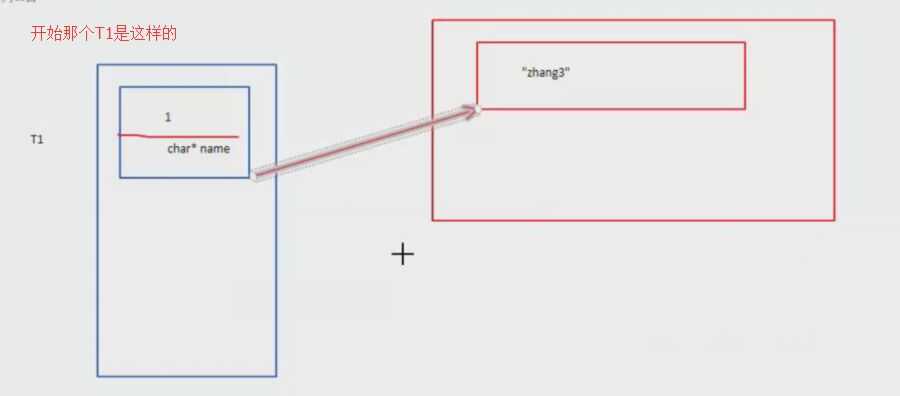
然后就是那个t2 就是这样的。
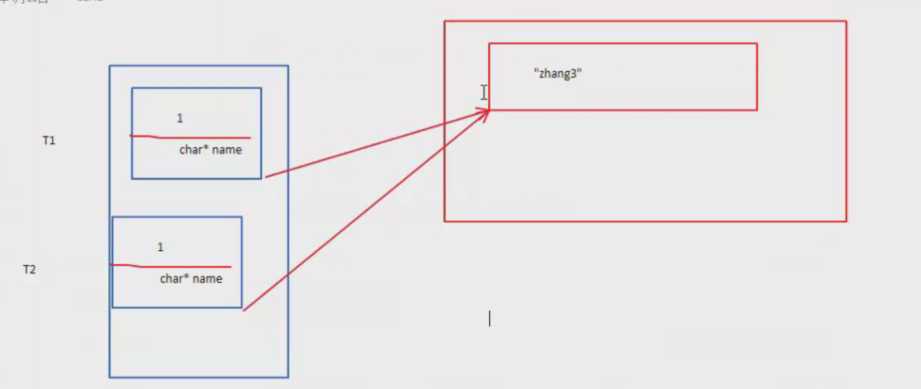
但是我调用完 hanshu()后,先析构t2 那么那块对内存被回收了
然后,我又回收t1 那个t1的name不是空 还是调用那个free函数,但是 那块内存已经被回收了,所以就有了错误,系统就崩掉了
这个是浅拷贝带来的问题
然后,就有可深拷贝,来避免这个问题
需要一个显式的深构造函数,来完成深构造函数
只要你的类成员中有一个指针,就需要 提供一个手动深构造函数,来完成深拷贝动作。
1 #include<iostream> 2 #include<string> 3 using namespace std; 4 5 6 class Teacher{ 7 public: 8 Teacher(int id,char *name) 9 { 10 this->id=id; 11 int len=strlen(name); 12 13 this->name=(char*)malloc(len+1); 14 strcpy(this->name,name); 15 } 16 //新加的拷贝构造函数 17 Teacher(const Teacher &another) 18 { 19 id=another.id; 20 //深拷贝动作 21 int len=strlen(another.name); 22 name=(char*)malloc(len+1); 23 } 24 25 ~Teacher() 26 { 27 cout<<"Teacher的析构函数"<<endl; 28 if(this->name!=NULL) 29 { 30 free(this->name); 31 this->name=NULL; 32 } 33 34 } 35 private: 36 char *name; 37 int id; 38 39 }; 40 void hanshu() 41 { 42 Teacher t1(1,"王压抑"); 43 Teacher t2=t1; 44 } 45 int main() 46 { 47 hanshu(); 48 return 0; 49 }
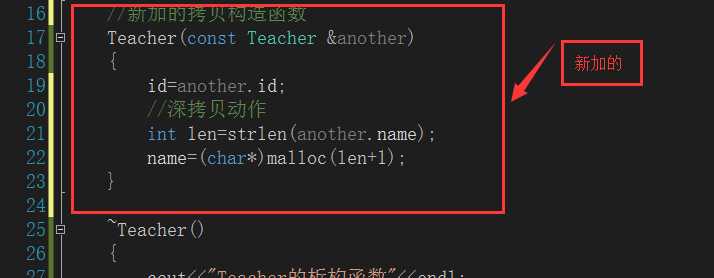
然后就变成了:
